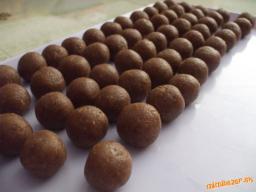Balls groups
Karel pulled the balls out of his pocket and divided them into groups. He could divide them in four, six, or seven, and no ball ever left. How little could be a ball?
Final Answer:

Tips for related online calculators
Do you want to calculate the least common multiple of two or more numbers?
You need to know the following knowledge to solve this word math problem:
algebraGrade of the word problem
Related math problems and questions:
- White balls
 I have three white balls and five red balls in my pocket. How many balls do I have to remove from the bag to ensure the pulled-out ball is red?
I have three white balls and five red balls in my pocket. How many balls do I have to remove from the bag to ensure the pulled-out ball is red? - Toy cars
 Paul has a collection of toy cars. He wanted to regroup them. But when he divided them into groups of three, four, six, and eight, he was always one left. Only when he formed groups of seven did he divide all toy cars. How many toy cars are in the collect
Paul has a collection of toy cars. He wanted to regroup them. But when he divided them into groups of three, four, six, and eight, he was always one left. Only when he formed groups of seven did he divide all toy cars. How many toy cars are in the collect - Determine 82733
 Tomáš collects NHL cards. Find out that he will never have any cards left if he divides them into groups of three, four, five, or six. Determine how many hockey cards Tomáš has; if their number is three-digit and starts with the number 2,
Tomáš collects NHL cards. Find out that he will never have any cards left if he divides them into groups of three, four, five, or six. Determine how many hockey cards Tomáš has; if their number is three-digit and starts with the number 2, - Eggs in basket
 If the eggs in a basket are removed twice at a time, one will remain. Two eggs will remain if the eggs are removed three at a time. If the eggs are removed four, five, or six at a time, the three, four, and five eggs will remain, respectively. However, no
If the eggs in a basket are removed twice at a time, one will remain. Two eggs will remain if the eggs are removed three at a time. If the eggs are removed four, five, or six at a time, the three, four, and five eggs will remain, respectively. However, no - Balls 6
 Jane has balls in her bag that could be divided fairly between 4, 5, or 6 children. How many balls at least does Jane have in her bag?
Jane has balls in her bag that could be divided fairly between 4, 5, or 6 children. How many balls at least does Jane have in her bag? - SKMO
 Petra had written natural numbers from 1 to 9. She added two of these numbers, deleted them, and wrote the resulting sum instead of the summaries. She thus had eight numbers written down, which she managed to divide into two groups with the same product.
Petra had written natural numbers from 1 to 9. She added two of these numbers, deleted them, and wrote the resulting sum instead of the summaries. She thus had eight numbers written down, which she managed to divide into two groups with the same product. - Different 2283
 The shop had mugs of different shapes, sizes, and patterns. The seller divided them into four groups. Write down how he divided them.
The shop had mugs of different shapes, sizes, and patterns. The seller divided them into four groups. Write down how he divided them.
